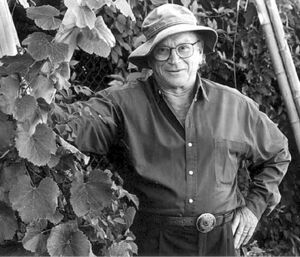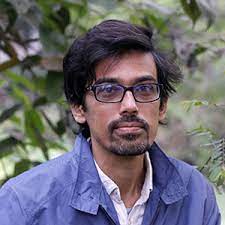Democratic Landscape Transformation 2023 - Team 8
>>> Back to working group overview
>>> Back to seminar reading list
>>> go to the Editing Help
Background of your team
- Please write a few words about your team.
- Which linguistic and cultural perspectives are you representing? Which disciplinary backgrounds?
Your Landscape Democracy Manifestoes
Here you can add links to the manifestoes you have presented on April 26
- Malavika's Manifesto : https://docs.google.com/presentation/d/1_w3rMWd9l-eaknS3fQEyKK7beVZlXCmG4RRy1jDVFPk/edit?usp=sharing
- Marinos Kokkinos's Manifesto : https://drive.google.com/file/d/1T0ham0kAKeXibzOTiQ9hPlqGQR0X7z2M/view
- Aynun Nur Sadia´s Manifesto : https://drive.google.com/file/d/1PyMCjdZWz2umbIFTAGIEW5jbynzcmAF2/view?usp=sharing
- Rafi Ahmad's Manifesto : https://drive.google.com/file/d/19t8_4wHzona5YQ8BnYdpt9X-poVKMYrU/view
Examples of Landscape Activism
In the session on May 10 you will discuss examples of landscape activism from your own contexts. You can share the examples in this section (link, image and/or short explanation).
- Malavika´s Design Activism: https://docs.google.com/presentation/d/1ps5L2LyO4ybwRIJqqA3eQLLPI9xgmGehQOCz6tHXkvk/edit?usp=sharing
- Rafi Ahmad´s Design Activism: https://drive.google.com/file/d/1-_RrIFPk2sGdm5UykiS6uEI8fcNQW0sT/view?usp=share_link
- Aynun Nur Sadia´s Design Activism: https://drive.google.com/file/d/1f8xrpahhw-C-yP234-ZkxOqgoQ8SH9RC/view?usp=sharing
The Role Play
In the session on May 17 you will present a small role play with your team. Please add here a short reflection on what you have learned from this play. The short list of landscape democracy 'movers and shakers' can be found here
For the role play, the link of our chosen manifesto is given below:
https://drive.google.com/file/d/1PyMCjdZWz2umbIFTAGIEW5jbynzcmAF2/view?usp=sharing
We chose an activist to role play individually.
Aynun Nur Sadia
Activist: Karl Linn(1923-2005), United States
Karl Linn is an American Landscape Architect, Psychologist, Educator, and Community Activist. Best known for inspiring and guiding the creation of "Neighborhood Commons" on vacant lots in East Coast inner cities during the 1960s-1980s.
He employed a strategy called “Urban Barn raising" .Linn is considered as 'Father of American Participatory Architecture' by many academic colleagues and architectural and environmental experts of the National Endowment for the Arts. Linn believed in “Participatory Architecture”. He engaged neighborhood residents, volunteer professionals, students, youth teams, social activists, and community gardeners in envisioning, designing, and constructing instant, temporary, and permanent gathering spaces in neighborhoods, on college campuses, at sites of major conferences and events.
Link to the full presentation with the overview of Linn´s life, works, philosophy of works, challenges he faced and the role playing of how he would address the challenge of chosen manifesto is given below:
https://drive.google.com/file/d/1AXZ4cGHqLQUdTCVrcecbn7MaXD4kf-0i/view?usp=sharing
Reflection:
I was so inspired by his philosophy of works. It was so amazing to learn how he gathered people from different cultures, background and ensured their participations in envisioning, designing and constructing of a project. How he produced positive self identifications within community members and design students was quite interesting. His tactics to focus on work training programs and the establishment of "Process Institutions" made me so amazed. Focusing on local assets like using local materials, blending Art with the nature was on of his strategy of works .
i learned from his works how to share knowledges and work together. In my perspective it´s really important to engaged the community to share knowledge and utilizing it for designing the common spaces they share.
Rafi Ahmad
Activist: Khondaker Hasibul Kabir (1995-), Bangladesh
Khondaker Hasibul Kabir is a Bangladeshi landscape architect and sustainability advocate who works in rural and sustainable design with Bangladeshi development organisations such as BRAC and Grameen. He is the co-founder of Co.Creation.Architects, which works with human and non-human communities to co-create better-built and natural habitats. He is a core team member of the Platform of Community Action and Architecture (POCAA) which works in Bangladesh and Community Architects Network (CAN) which works in 19 Asian countries. He teaches landscape and architecture at BRAC University, Bangladesh. Co.Creation.Architects received the UIA 2030 Award and the Aga Khan Award for Architecture 2022 for their works.
A link to the full presentation with an overview of Kabir´s life, works, philosophy of works, challenges he faced, and role-playing of how he would address the challenge of his chosen manifesto is given below:
https://drive.google.com/file/d/1QmI9-QOSQnlbZgNOZMHTk5wkTgzndEsA/view?usp=share_link
Reflection:
His work strategy impressed me tremendously. It was fascinating to learn how he brought together people from all backgrounds and assured their participation in the conceptualization, planning, and construction of a project. His strategies to focus on job training programmes and the tool "Networking" astounded me.
His efforts taught me how to share information and collaborate. In my opinion, it is critical to engage the community in sharing knowledge and using it in the design of the common places they share.
Malavika Mohan Das
Activist: Editing (1995-), Bangladesh
Under Editing
A link to the full presentation with an overview of Kabir´s life, works, philosophy of works, challenges he faced, and role-playing of how he would address the challenge of his chosen manifesto is given below:
https://drive.google.com/file/d/1QmI9-QOSQnlbZgNOZMHTk5wk
Reflection:
His work strategy impressed me tremendously. It was fascinating to learn how he brought together people from all backgrounds and assured their participation in the conceptualization, planning, and construction of a project. His strategies to focus on job training programmes and the tool "Networking" astounded me.
His efforts taught me how to share information and collaborate. In my opinion, it is critical to engage the community in sharing knowledge and using it in the design of the common places they share.
>>> All information on the phase B activities is compiled in this PDF
Readings, concepts and definitions
- Start: April 5, 2023
- Due: July 5, 2023
Working in your group, express your personal understanding of the relation of landscape and democracy in the form of a concept map with linking words or any other diagrammatic representation. Please make your maps very visual and not just verbal. Think critically about why one map differs from another
About concept mapping
Before starting the exercise you can read this article by Joseph D. Novak & Alberto J. Cañas about Theory Underlying Concept Maps and How to Construct and Use Them. This paper gives a good explanation of how concept maps are conceived and developed.
You can use any tool you like for producing your concept map. However, since the result needs to be submitted digitally we recommend the following open source software for producing your maps:
- Cmap Tools >>> you can also work with your group on the Cmap cloud doing a shared map
- VUE - The Visual Understanding Environment
Please add your concept map(s) here
- Possible format: JPG (for wiki upload) or link to any other resource
- You may add one map per team member or an integrated one
- add as many additional materials as you need
- Addyourfilename.jpg
one caption per author
- Addyourfilename.jpg
one caption per author
- Addyourfilename.jpg
one caption per author
- Addyourfilename.jpg
one caption per author
Please finish with a short reflection
- What are the similarities and differences in your team regarding your understanding of what democratic landscape transformation is?
- In how far did the seminar lectures and readings help you to clarify this?
- What will you take home from this seminar?

